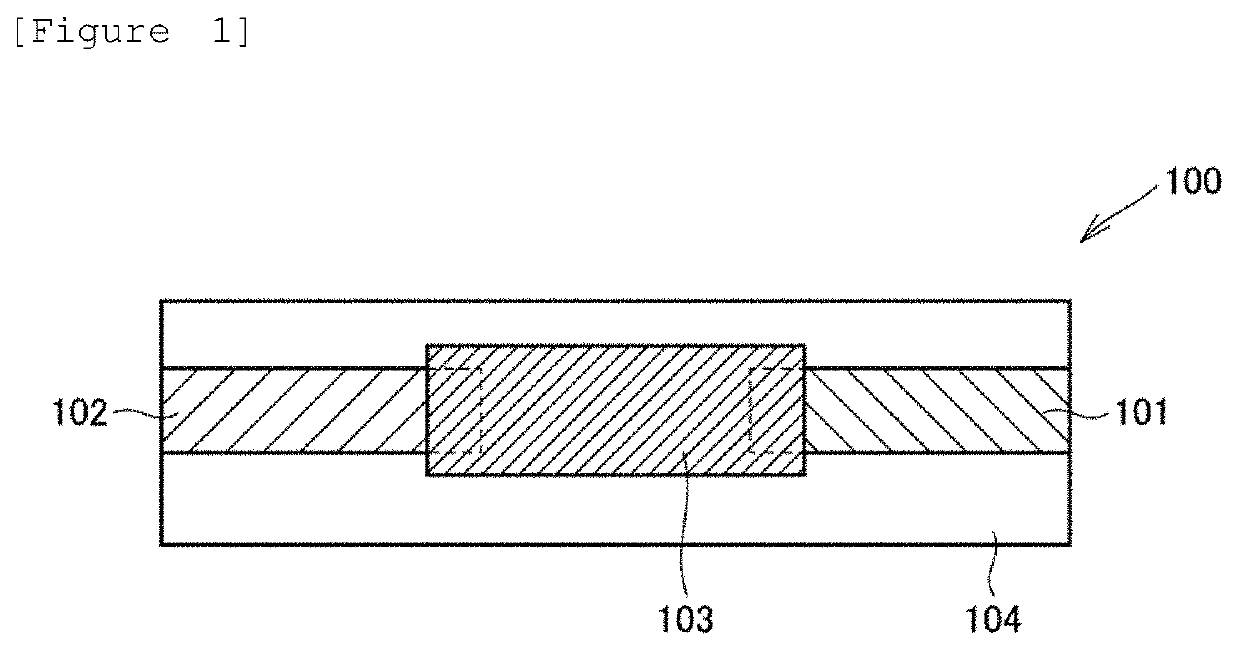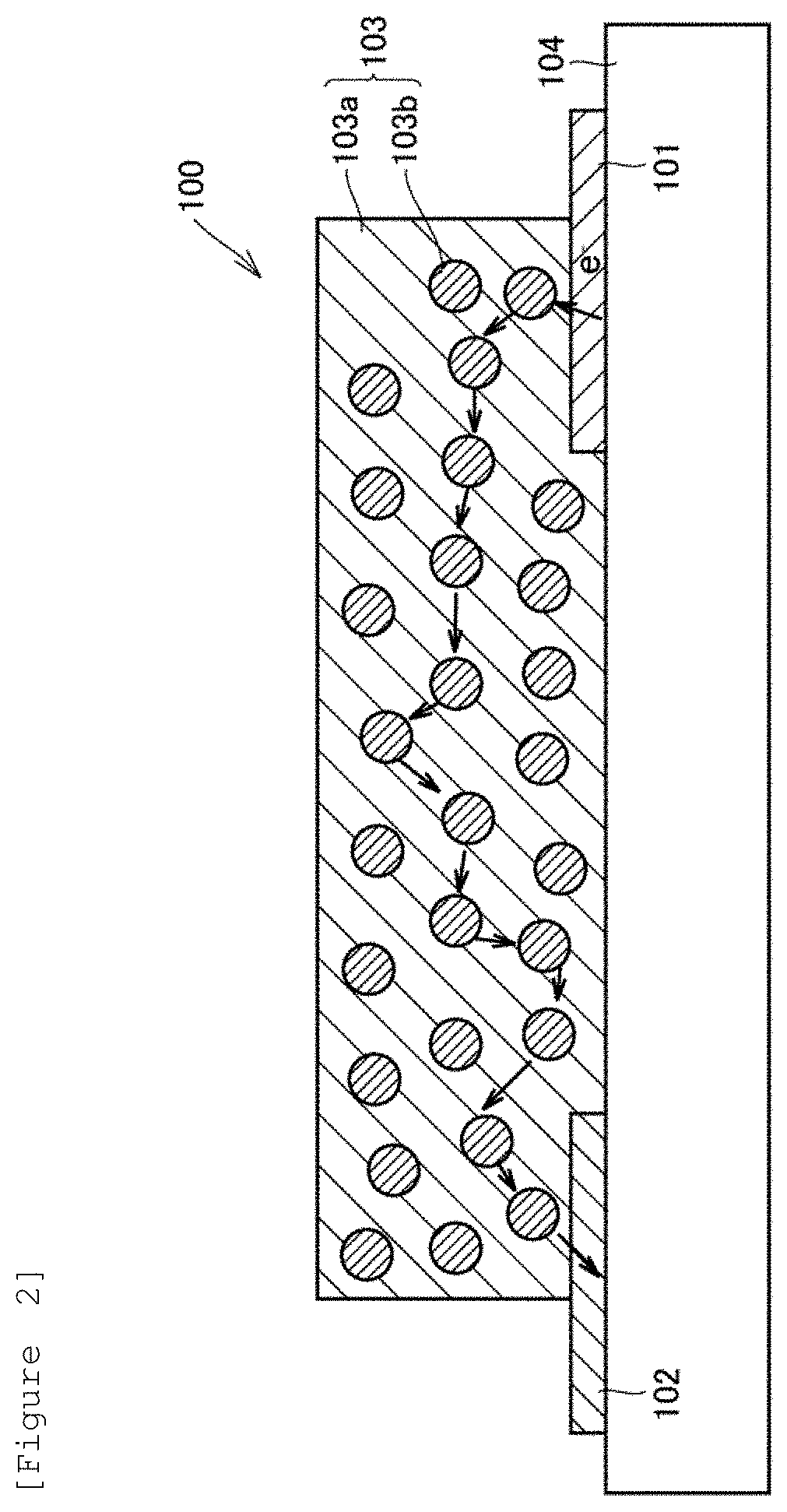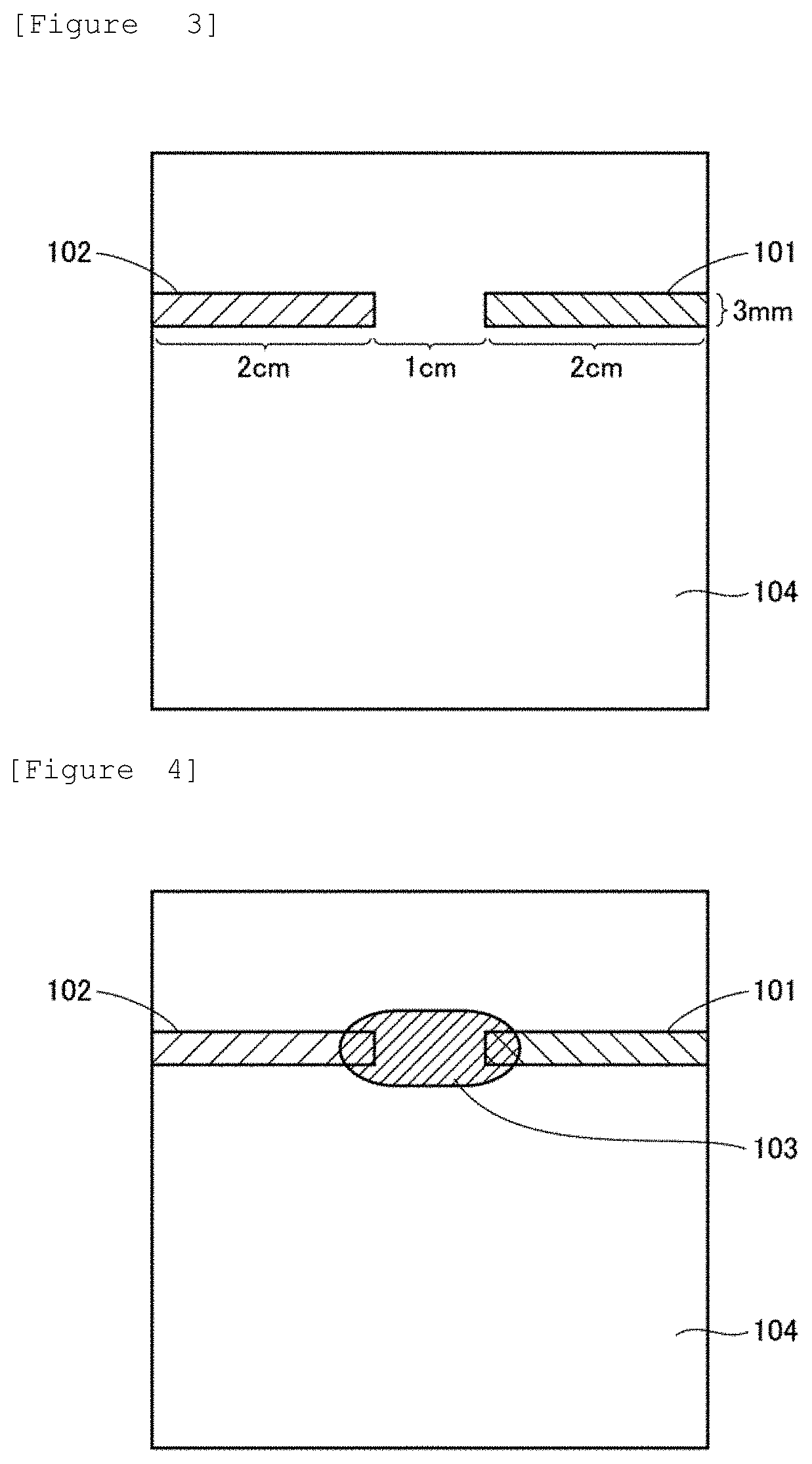Temperature sensor element
a technology of temperature sensor element and temperature sensor element, which is applied in the direction of heat measurement, fixed capacitor details, instruments, etc., can solve the problem that the flexibility of temperature sensor element using the same is usually difficult, and achieve the effect of stable electric resistance valu
- Summary
- Abstract
- Description
- Claims
- Application Information
AI Technical Summary
Benefits of technology
Problems solved by technology
Method used
Image
Examples
production example 1
Preparation of Dedoped Polyaniline
[0169]A dedoped polyaniline was prepared by preparing and dedoping a polyaniline doped with hydrochloric acid, as shown in the following [1] and [2].
[0170][1] Preparation of Polyaniline Doped with Hydrochloric Acid
[0171]A first aqueous solution was prepared by dissolving 5.18 g of aniline hydrochloride (manufactured by Kanto Kagaku) in 50 mL of water. A second aqueous solution was prepared by dissolving 11.42 g of ammonium persulfate (manufactured by Fujifilm Wako Pure Chemical Corporation) in 50 mL of water.
[0172]Next, the first aqueous solution was stirred using a magnetic stirrer at 400 rpm for 10 minutes with the temperature being regulated at 35° C., and thereafter, the second aqueous solution was dropped to the first aqueous solution at a dropping speed of 5.3 mL / min under stirring at the same temperature. After the dropping, a reaction was further allowed to occur for 5 hours with a reaction liquid being kept at 35° C., and thus a solid was p...
production example 2
Preparation of Matrix Resin 1
[0177]A powder of polyimide having a repeating unit represented by the following formula (5) was produced using 2,2′-bis(trifluoromethyl)benzidine (TFMB) represented by the following formula (3), as a diamine, and 4,4′-(1,1,1,3,3,3-hexafluoropropane-2,2-diyl)diphthalic dianhydride (6FDA) represented by the following formula (4), as a tetracarboxylic dianhydride, according to the description in Example 1 of International Publication No. WO 2017 / 179367.
[0178]The powder was dissolved is propylene glycol 1-monomethyl ether 2-acetate so that the concentration was 8% by mass, thereby preparing polyimide solution (1). In the following Examples, polyimide solution (1) was used as matrix resin 1.
production example 3
Preparation of Matrix Resin 2
[0179]Fifty two g (162.38 mmol) of TFMB represented by the formula (3) and 884.53 g of dimethylacetamide (DMAc) were added to a 1-L separable flask equipped with a stirring blade, and TFMB was dissolved in DMAc at room temperature under stirring, under a nitrogen gas atmosphere, according to Example 5 of Japanese Patent Laid-Open No. 2018-119132.
[0180]Next, 17.22 g (38.79 mmol) of 6FDA represented by the formula (4) was added to the flask, and stirred at room temperature for 3 hours.
[0181]Thereafter, 4.80 g (16.26 mmol) of 4,4′-oxybis(benzoyl chloride) [OBBC] represented by the following formula (6) and then 19.81 g (97.57 mmol) of terephthaloyl dichloride (TPC) were added to the flask, and stirred at room temperature for 1 hour.
[0182]Next, 8.73 g (110.42 mmol) of pyridine and 19.92 g (195.15 mmol) of acetic anhydride were added to the flask, stirred at room temperature for 30 minutes, then heated to 70° C. by use of an oil bath, and further stirred for ...
PUM
| Property | Measurement | Unit |
|---|---|---|
| temperature-sensitive | aaaaa | aaaaa |
| temperature | aaaaa | aaaaa |
| conductive | aaaaa | aaaaa |
Abstract
Description
Claims
Application Information
 Login to View More
Login to View More - R&D
- Intellectual Property
- Life Sciences
- Materials
- Tech Scout
- Unparalleled Data Quality
- Higher Quality Content
- 60% Fewer Hallucinations
Browse by: Latest US Patents, China's latest patents, Technical Efficacy Thesaurus, Application Domain, Technology Topic, Popular Technical Reports.
© 2025 PatSnap. All rights reserved.Legal|Privacy policy|Modern Slavery Act Transparency Statement|Sitemap|About US| Contact US: help@patsnap.com



